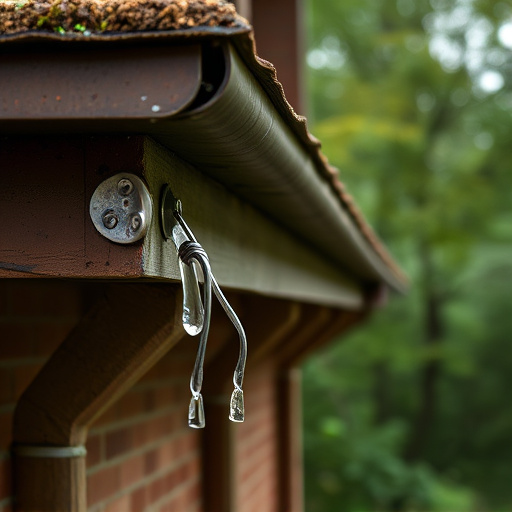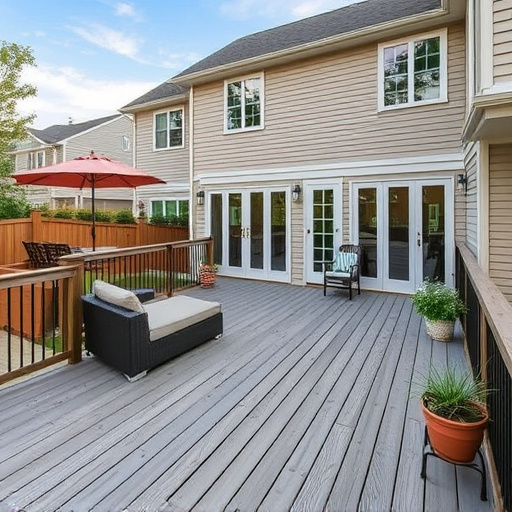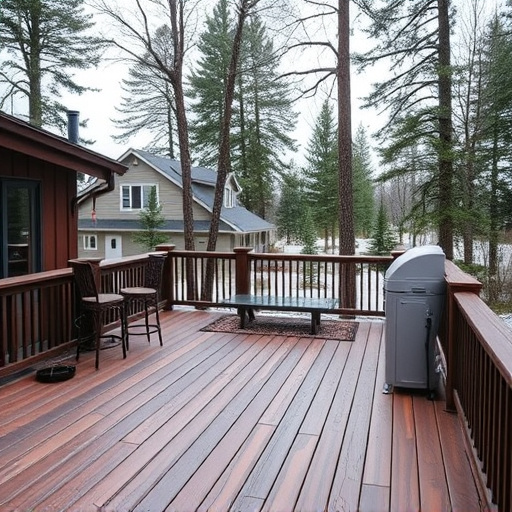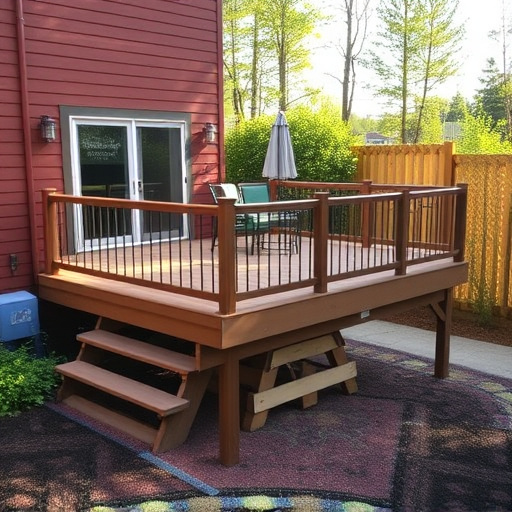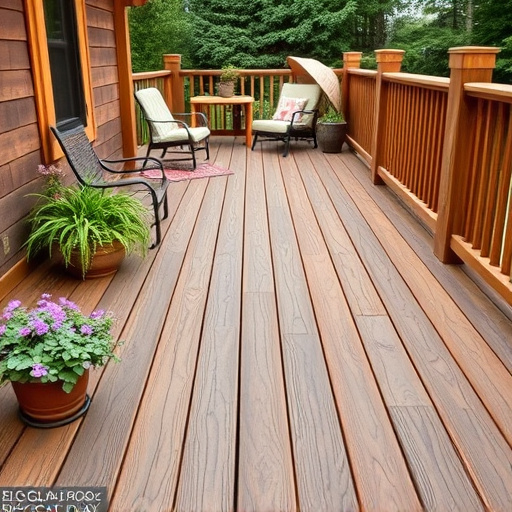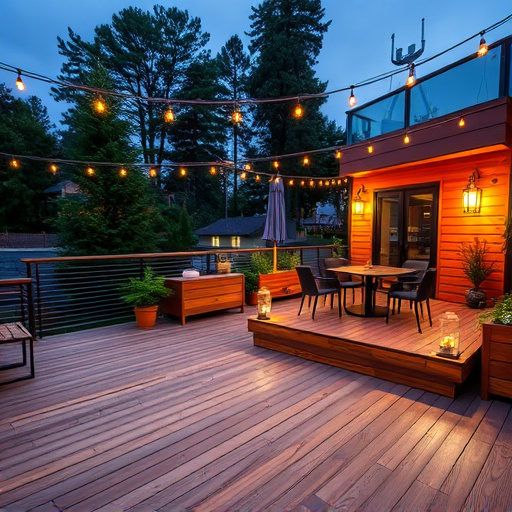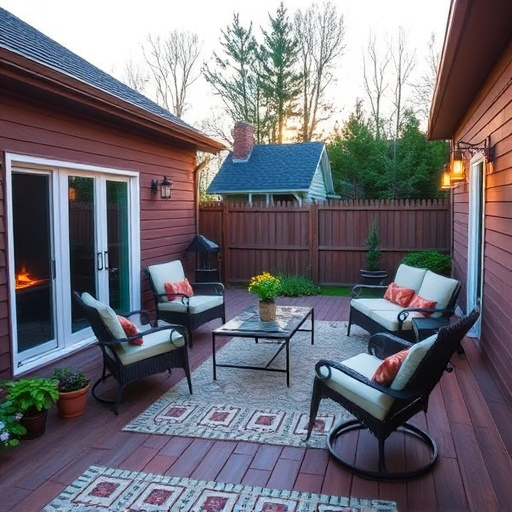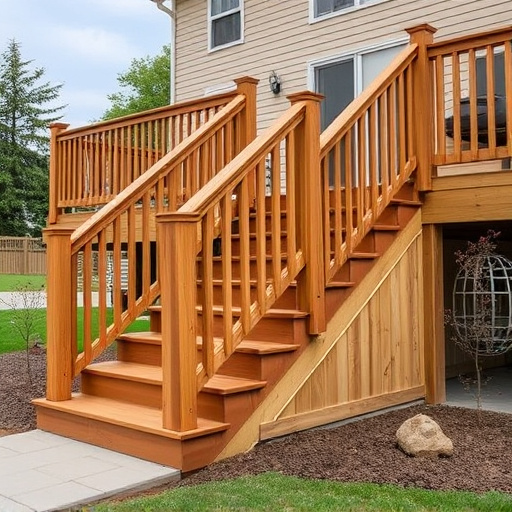Selecting suitable deck boards is key to year-round deck durability. For mild weather, natural wood offers aesthetics and durability but requires maintenance. Extreme heat needs composite or PVC boards resistant to warping and fading. Colder climates demand synthetic materials for long-term protection against freezing and thawing. Regular cleaning, sealing, and gap sealing prevent water damage across diverse weather conditions. Integrating roofing services enhances deck protection.
Selecting the right deck boards is crucial for ensuring your outdoor living space endures diverse climates. This guide navigates the process, focusing on adaptability and longevity. We explore different materials and their climate-specific advantages, helping you choose boards suited to extreme weather conditions. Additionally, we provide best practices for maintenance across varying environments, ensuring your deck remains a vibrant, low-maintenance oasis year-round.
- Understanding Deck Board Materials for Climate Adaptability
- Factors to Consider When Choosing Boards for Extreme Weather
- Best Practices for Maintaining Decks in Diverse Climates
Understanding Deck Board Materials for Climate Adaptability

When selecting deck boards for different climates, understanding the adaptability of materials is key. Deck boards come in various options—wood, composite, and PVC—each with unique properties that make them more or less suitable for specific environments. For regions with mild weather, natural wood offers both aesthetic appeal and durability. Its organic texture and ability to withstand varying temperatures make it a popular choice. However, areas prone to extreme heat may require composite or PVC boards, as they are resistant to warping and fading, ensuring your deck remains in top condition.
In contrast, colder climates pose specific challenges, such as freezing and thawing cycles, which can damage wooden decks over time. In such scenarios, synthetic materials like composites and PVC prove beneficial. They maintain their strength and stability through varying temperatures and are less susceptible to storm damage repair or siding repairs commonly associated with roof replacement. These boards offer long-term solutions for outdoor spaces in diverse climates, ensuring your deck remains a comfortable and low-maintenance haven all year round.
Factors to Consider When Choosing Boards for Extreme Weather
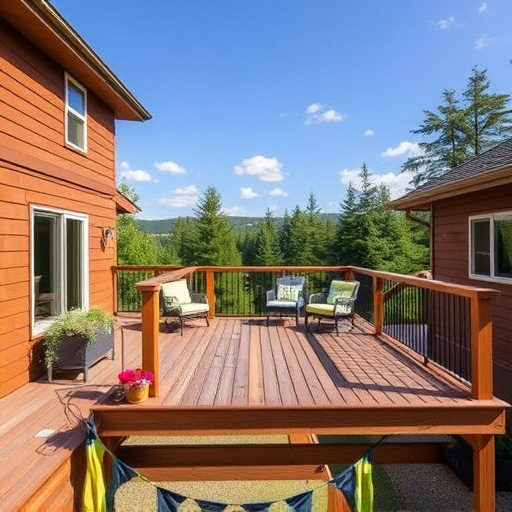
When selecting deck boards for regions prone to extreme weather conditions, several key factors come into play. First and foremost, consider the material’s durability against harsh elements like strong winds, heavy rainfall, and prolonged sunlight exposure. Natural wood may require more frequent maintenance in such climates due to its susceptibility to rot, warping, and fading over time. Thus, opting for high-quality composite or synthetic deck boards can be a prudent choice, as these materials are designed to withstand weather variations without compromising aesthetics.
Additionally, the structural integrity of your deck relies on robust fasteners and proper installation techniques tailored to extreme weather conditions. Professional siding and roofing experts recommend using corrosion-resistant hardware and sealing gaps effectively to prevent water intrusion, which is crucial for long-lasting decks. Regular siding replacement may be necessary in regions with severe winters or frequent storms to ensure the deck’s structural integrity and visual appeal remain intact throughout the year.
Best Practices for Maintaining Decks in Diverse Climates

Maintaining a deck across varying climates requires tailored care to ensure longevity and aesthetics. In colder regions, regular cleaning and sealing are essential to protect deck boards from snow and ice damage. The harsher the winter, the more frequent these tasks should be. Additionally, considering weatherproof decking materials can significantly enhance durability, such as choosing treated wood or composite boards designed for resilience against freezing temperatures.
In contrast, decks in drier climates face unique challenges. Sun exposure accelerates wood aging, leading to fading and cracking. Regular cleaning with a mild detergent and rinsing can mitigate these effects. Applying a high-quality sealant annually offers an extra layer of protection, guarding against water loss and structural damage caused by extreme heat and low humidity levels. Integrating exterior home improvements like roofing services or roof repairs can also contribute to overall deck care, shielding it from the most brutal elements.
Selecting the right deck boards is crucial for ensuring your outdoor living space stands the test of time, regardless of the climate. By understanding material adaptability and key factors like moisture resistance and UV protection, you can make informed choices. Following best practices for maintenance tailored to your region will further protect your investment, ensuring a durable and low-maintenance deck that enhances your home for years to come. Remember, the right deck boards can transform your outdoor space into a vibrant, weather-resilient oasis.
